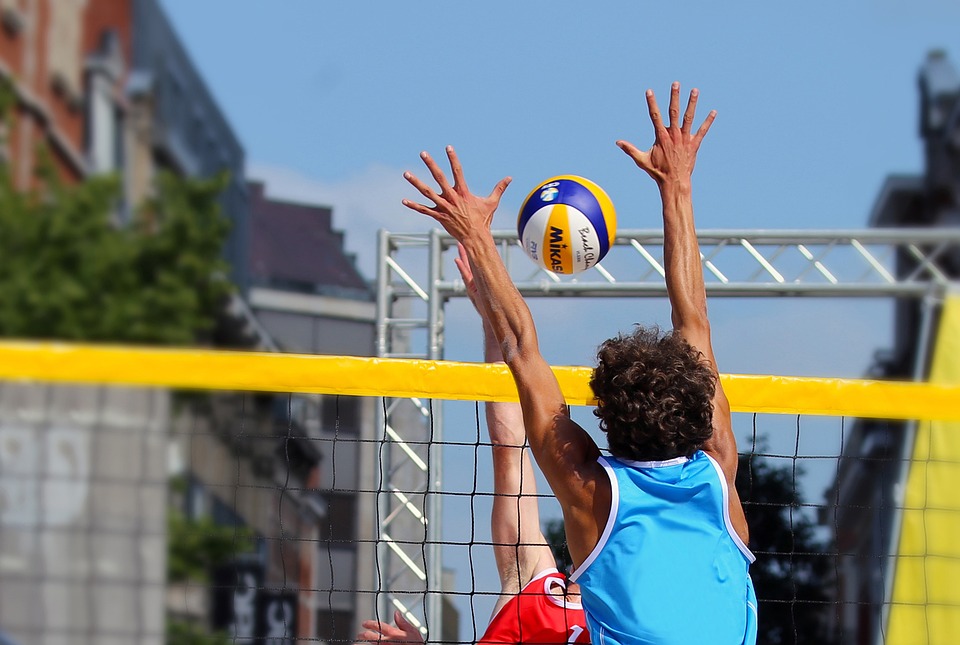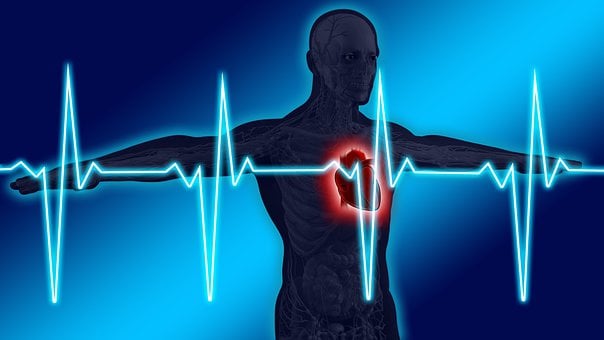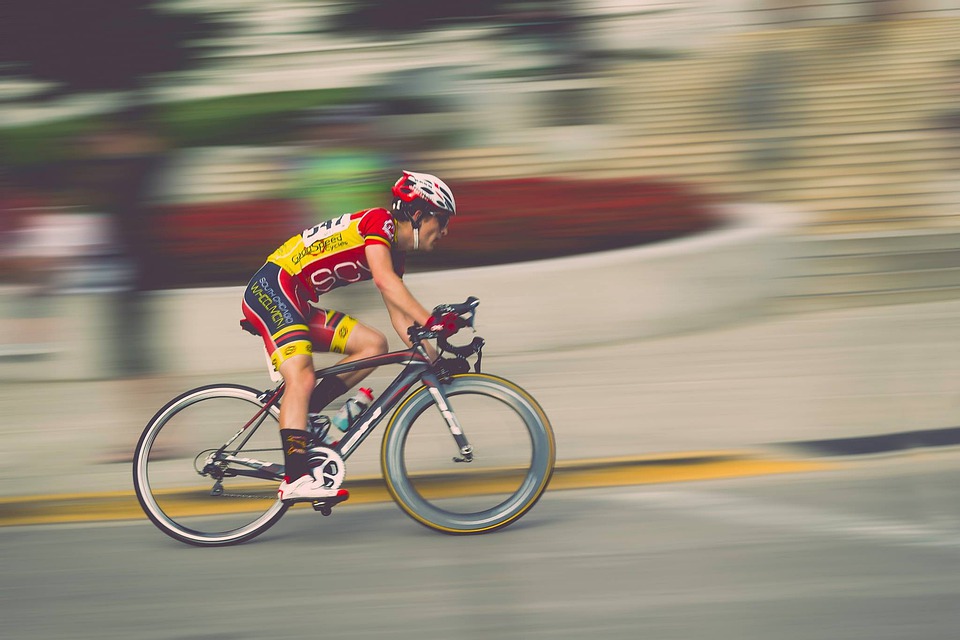
You need to have good genes, a regular workout routine, and a healthy diet to reach a high level of athletic performance. Optimal nutrition is essential for peak performance. False dietary information can be as detrimental to an avid athlete as eating properly can be beneficial. An individual engaging in a regular physical activity program (e.g. 30-40 minutes per day, most days of the week) can fulfill their dietary requirements by keeping to a balanced diet. Athletes practicing either moderate or vigorous activities regularly must boost their consumption to make sure they are receiving the proper amount of nutrition.
Athletes attain their best possible performance by practicing and eating a healthy meal which includes different types of food. Carbohydrates and fat provide fuel for the body. The amount of fat that gets used as energy during exercise is contingent on the intensity and length of the activity, as well as the fitness level of the individual involved. Exercise may increase the athlete’s need for protein. Water is a critical nutrient for athletes. Lack of hydration can cause muscle spasms and weariness, thereby increasing the possibility of having a heat stroke.
A Brief Review of the History and Physiology of Endurance Exercise
Are human beings “wired” for endurance activity? Evolutionary biology appears to strongly suggest that this is the case! Professor Dan Lieberman of Harvard has devoted his life’s work to examining the way in which the human body has changed over time, paying particular attention to the significant role that running may have had in the development of the human form. It is thought that continual long-distance running enabled our distant ancestors to tire out their herbivorous prey, thus making meat a more regular part of the human diet. Evolutionary biologists, such as Richard Wrangham, argue that partaking in the consumption of meat likely caused a boost in the scale of our brain’s development due to the abundance of accessible energy and essential nutrients that it provides, including iron, zinc, niacin (vitamin B3), vitamin B12, as well as dietary cholesterol. Covering long distances on foot, but maybe not sprinting, enabled our forebears to search for essential vegetation. In other words, our ability to carry out physical activities for the purpose of obtaining food could have been the factor that has led us to become the highly intelligent, advanced beings we are today.
The Physiology of Endurance Exercise
Cardiovascular exercise depends mainly on the body’s aerobic system to energize and sustain its action. Types of activities that require staying power and a lot of effort are biking, jogging, walking, carrying a large pack, cross-country skiing, and sculling, just to name a few.
ATP is a molecule that stores energy for the short term to power your muscle cells. A burst of energy is released when the bonds between atoms in ATP are severed. This chemical energy fuels life itself. The production rate of ATP restricts both the velocity and the capacity to endure a lengthy activity.
The capability to take part in endurance tasks that do not last longer than two hours relies on how quickly skeletal muscles can sustainably provide energy to stimulate muscular contractions. Endurance activities that go on for more than two hours require the body to draw from its energy resources of glycogen, which is a type of carbohydrate saved in the liver, muscles, and fat. These types of energy that can be retained can be utilized to produce ATP. ATP availability is essential for endurance performance.
The carbohydrates, proteins, and fats present in our diets have to be separated into sugars, amino acids, and fatty acids in order to provide our bodies the necessary support to perform their everyday activities. There are two pathways in the mitochondria, the “energy powerhouses” of your cells, by which sugars and fatty acids are metabolized to create ATP:
- The anaerobic glycolysis pathway: This is how glucose, derived mainly from dietary carbohydrates, is processed to produce ATP. Anaerobic glycolysis does not require oxygen and is used to fuel activity where the ATP demand is high, such as sprinting or high-intensity interval training.
- Aerobic metabolism: The aerobic metabolic pathway uses pyruvate, a product of the anaerobic glycolysis pathway, and fatty acids to produce ATP. Think of this pathway as an extension of the anaerobic glycolysis pathway that produces far more ATP than anaerobic glycolysis alone but functions at a slower rate. Aerobic metabolism largely fuels longer-duration, less intense physical activity.
It is important to recognize that both anaerobic and aerobic metabolic processes are operating at once; however, the amount that each contributes to activity is determined by the intensity of the exercise.
Endurance activities that depend largely on carbohydrates taxing the anaerobic glycolysis process, resulting in the production of the metabolic byproduct called lactic acid. A buildup of lactate can occur over the course of an endurance exercise activity as a result of glycolysis. The accumulation of lactate causes the cells to become more acidic, hindering muscle movement; it also blocks the formation of glucose, leading to a drop in ATP production. Although the production of lactic acid is unavoidable during certain levels of exercise intensity and speed, the longer we can use our body’s aerobic metabolism instead of anaerobic mechanisms to strength endurance activity, the more energy can be manufactured within our cells.
Cells have the ability to transform lactate into energy by reverting it back to glucose, meaning that lactate is not just something that is useless; athletes who are firm in their training have fewer amounts of lactate in their blood because they can clear the lactate faster. At last, everyone hits the Mark of lactate threshold which is a point in exercise where the lactate amount rises faster than it is being moved out of the blood. This threshold is the best predictor of endurance performance. A greater lactate threshold will allow athletes, both experienced and novice, to participate in activities for more extended periods without having to quit due to exhaustion.
An ancestral diet style could potentially be advantageous in the context of appropriate training for endurance athletes since it decreases their reliance on carbohydrates and assists them in adjusting to using fat for aerobic metabolic processes. Nevertheless, this is only one advantage of using an ancestral nutrition skill for endurance-based physical activity.
Optimal Foods for an Endurance-Focused Ancestral Diet
An ancestral diet for endurance athletes should be centered around the following foods:
- Protein: From a biochemical perspective, animal protein is more bioavailable than plant protein; this fact may be crucial for endurance athletes, who place significant demands on their musculature to perform their respective sports. Meat, poultry, seafood, eggs, and dairy products, for those who tolerate them, represent ideal dietary protein sources for endurance athletes.
- Carbohydrates: An ancestral diet emphasizes cellular carbohydrates or foods that contain carbohydrates within plant cell walls. These foods have a lower carbohydrate density and may support balanced blood sugar control and healthier gut microbiota. However, there’s also a time and place for denser whole-food-based carbs for endurance athletes, such as white rice, long-fermented sourdough, properly prepared legumes (legumes that have been soaked thoroughly before cooking), or gluten-free grains to replenish glycogen stores, and/or natural sugars such as honey or dates to fuel high-intensity exercise. The amount of carbohydrates an endurance athlete—recreational or professional—requires for optimal performance is best determined with the help of a dietitian or nutritionist.
- Fat: Healthy fats, including olive oil, coconut oil, avocado oil, butter, ghee, avocados, olives, nuts, seeds, and fatty cold-water fish, provide anti-inflammatory fats for supporting hormone production and exercise recovery. Full-fat, organic, or grass-fed dairy products may also serve as a source of healthy fats for those athletes who tolerate them.
- Non-starchy vegetables: Non-starchy vegetables, such as broccoli, kale, mushrooms, and bell peppers, may not be energy-dense, but they do provide dietary fiber, micronutrients, and phytonutrients for dampening inflammation and supporting the gut microbiota, which, as we’ll learn, can be significantly impacted by endurance exercise.
The Benefits of an Ancestral Diet for Endurance Athletes
An ancestral diet is an optimal eating strategy for endurance athletes for four primary reasons:
- It supports gut health, which can become compromised by endurance exercise.
- It is anti-inflammatory and thus attenuates inflammation triggered by exercise.
- It provides essential nutrients for endurance exercise performance and recovery.
- It promotes fat-adaptation, allowing endurance athletes to become more metabolically efficient.
Meal and Macronutrient Timing for Endurance Athletes
The schedule of when an endurance athlete should eat and the amounts of macronutrients they should consume largely depends on what type of exercise or event they are taking part in. For routine training, females should always enter a workout with some “fuel in the tank.” If training is being completed early in the morning, consuming at least 150 calories of food before the workout to avoid triggering hypothalamic–pituitary–adrenal (HPA) axis dysfunction, followed by a complete meal balanced in protein, carbs, and fat after the workout, is ideal.
Individuals who exercise in the morning might be capable of having a workout with no food intake a few times a week (this is known as a “train low” approach). Training in a carbohydrate-restricted state at certain intervals may help improve the components that cause positive changes due to exercise training. Nonetheless, this practice of not eating before certain trainings or competitions should not be adopted in all circumstances. Additionally, it remains uncertain whether the “train low” technique is beneficial for women; for now, I do not recommend it as female hormones are delicate and may have an unwelcome reaction to this strategy.
Nutrition for Female Endurance Athletes
Particular thought ought to be given to female endurance athletes due to the fact that estrogen and progesterone, the primary female sex hormones, have a profound effect on many aspects of endurance activity. The levels of estrogen and progesterone, differing over the course of a female’s menstrual cycle, have an effect on the way that carbohydrates and fats are stringently used for energy, in addition to balance of body fluids, strength of bones, and the working of the heart.
When estrogen levels are increased before ovulation and in the middle of the menstrual cycle, women are more apt to be able to burn fat for energy. Endurance exercise at a low to moderate intensity may be the most beneficial for women who are at different points in the cycle, as fat can be easily burned with this activity level. If a female is interested in doing more intense endurance exercise during these times, She could consider adding more carbs to her diet to give her energy for her anaerobic activities.
Female endurance athletes must also be aware of the amount of protein they consume, as their bodies are more prone to breaking down after completing a long-distance event. A goal for female individuals would be to consume 1.5 to 2.0 g of protein per kg of their weight per day. Post-exercise, premenopausal women should consume a minimum of 0.32 – 0.38 g of protein per kilogram of their body weight. Getting the proper amount of protein is especially important during the luteal stage when the female body is more likely to break down muscle.
The Pre-Game Meal
Consuming food prior to a competition can improve performance more than exercising while not having eaten. Having a meal at least three to four hours before a competition or event will ensure the best digestion and energy supply. Experts typically suggest that athletes should consume a snack before competition that is between 500 and 1000 calories. This meal should be an appropriate size, neither too little nor too much, in order to avoid being hungry and avoiding indigestion.
The meal should be high in carbohydrates, which are simpler to process than proteins and fats. The starch should consist of complex carbs, such as bread, cold cereal, pasta, fruit, and vegetables. The digestion of these foods proceeds in a way that provides a continuous source of energy to the body, and they take two to three hours to leave the stomach.
Consuming food with a lot of sugar creates a spike in one’s blood glucose, which is then followed by a decrease and lack of energy. Furthermore, sugary foods can draw fluids into the stomach and intestines, which can cause dehydration, stomach aches, vomiting, and looseness of the bowels. Avoid eating any carbs between one and a half and two hours prior to an activity. This could potentially be the result of an early depletion of glycogen reserves in activities that involve stamina.
Pregame meals should be low in fat. Meals that are high in fat, fiber, and/or lactose require extra time to digest. Take in adequate fluids during this pre-game time. It is important to think about how much caffeine you are having (such as from cola, coffee, or tea), as it can cause dehydration due to the formation of more urine. Consuming foods that are familiar to you beforehand is key when it comes to preparing for an event, as this will ensure that they can be digested before any physical activity. If you don’t have much time before an event, it is best to eat smaller portions of food. Athletes should think about having a drink-based meal shortly before a competition if it is due to start in two hours or less in order to prevent stomach issues. The liquid food consumed prior to the start of a game or competition will have already left the stomach. Remember to include water with this meal.
The Post-Game Meal
No matter the age, sex, or sports activity, the suggested nutrition for after a match is the same. It is extremely advantageous to consume a modest meal within 30 minutes of finishing a practice session or competition. The food should be balanced, including sources of carbohydrates, protein, and fat. The most beneficial production of protein occurs right after exercising and consuming carbohydrates can help refill depleted glycogen levels. Nevertheless, fueling up in a period of half an hour might be strenuous for athletes- they generally feel queasiness or lack of appetite. Options to address this difficulty include:
- Consuming a drink that contains carbohydrates and protein. There are several liquid smoothies and beverages on the market that provide high protein and carbohydrates for replenishment. One classic is chocolate milk.
- If that is difficult, fruit, bread, crackers, or popsicles would all be better than not consuming any food.
Caution should be exercised by athletes regarding products or methods that purport to boost athletic performance. Many of these assertions have not been verified, and some aides may pose a risk or prevent one from achieving optimal performance.
It is essential to keep a healthy diet not only for sports but always. Eating a certain type of food before a game or following a special diet in the days leading up to a competition cannot make up for a lack of nutrition over the course of prior months or years. Lifelong nutrition habits must be emphasized. Adopting healthy eating habits in conjunction with an effective training and fitness regimen will enable any athlete to achieve peak performance.














